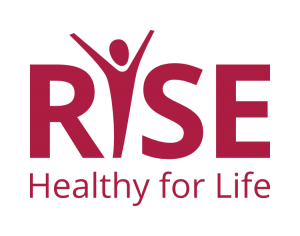Training
Exploring the Impact of Masculinity on Sexual Health
Far too often, masculine expectations lead those who identify as male to engage in harmful behaviors, including high risk sexual behaviors. Educators, youth workers, and other caring adults frequently see the negative impact of these expectations and struggle to reach male identified folks who are unwilling to seek out and utilize health care services and other support networks.
Online
Age Group(s) - Grades 6-8, Grades 9-10, Grades 11-12
Topic(s) - Conscious and unconscious bias about race, ethnicity, and culture disclosure, Consent and interpersonal and sexual violence, Creating an inclusive and affirming learning environment, Effective teaching strategies, HIV and other sexually transmitted diseases/infections, LGBQ+ identities, Racial and reproductive justice, Responding to challenging questions, Sex education in schools
State(s) - Alabama, Alaska, American Samoa, Arizona, Arkansas, California, Colorado, Connecticut, Delaware, District of Columbia, Florida, Georgia, Guam, Hawaii, Idaho, Illinois, Indiana, Iowa, Kansas, Kentucky, Louisiana, Maine, Maryland, Massachusetts, Michigan, Minnesota, Mississippi, Missouri, Montana, Nebraska, Nevada, New Hampshire, New Jersey, New Mexico, New York, North Carolina, North Dakota, Northern Mariana Islands, Ohio, Oklahoma, Oregon, Pennsylvania, Puerto Rico, Rhode Island, South Carolina, South Dakota, Tennessee, Texas, U.S. Virgin Islands, Utah, Vermont, Virginia, Washington, West Virginia, Wisconsin, Wyoming
Professional Learning Standards for Sex Education (PLSSE) Indicators
Conscious and unconscious bias about race, ethnicity, and culture Indicators - Indicator 4 (K-12): Describe three strategies to reduce the impact of conscious and unconscious bias and enhance cross-cultural interactions in the classroom when teaching sex education.
Consent, Interpersonal and Sexual Violence Indicators - Indicator 3 (K-12): Differentiate between situations in which sexual consent is and is not present.
- Indicator 7 (K-12): Explain the impact of childhood trauma on the decision-making and sexual health of students.
- Indicator 8 (K-12): Demonstrate three strategies to prevent and/or intervene in bullying and teasing. (S)
Creating and inclusive and affirming learning environment Indicators - Indicator 2 (K-12): Demonstrate three strategies for creating culturally responsive classrooms. (S)
- Indicator 4 (K-12): Demonstrate three strategies of a trauma-informed approach to sex education (e.g. giving trigger warnings before content on sexual assault and allowing students the right to pass as appropriate, etc.). (S)
Effective Teaching Strategies Indicators - Indicator 1 (K-12): Demonstrate the ability to build rapport with students. (S)
- Indicator 2 (K-12): Demonstrate three student-centered instructional approaches that support a variety of learning styles. (S)
- Indicator 4 (6-12): Demonstrate how to use the experiential learning cycle when teaching. (S)
- Indicator 5 (K-12): Describe three effective strategies for practicing skills with students.
HIV and other sexually transmitted diseases/infections Indicators - Indicator 4 (6-12): Explain three facilitators and three barriers to STD/STI testing and treatment.
LGBQ+ Identities Indicators - Indicator 4 (K-12): Demonstrate the use of inclusive and affirming language. (S)
- Indicator 5 (K-12): Demonstrate the ability to intervene effectively in homophobic and other bullying comments and actions. (S)
- Indicator 6 (K-12): Explain three ways that LGBQ+ youth are at disproportionate risk for health disparities.
Racial and Reproductive Justice Indicators - Indicator 1 (K-12): Define racism (including individual, interpersonal, institutional, ideological, structural, and systemic), racial micro-aggressions, and reproductive justice.
- Indicator 2 (K-12): Name three sexual health inequities and some of their systemic causes (e.g., African American women living with HIV have expressed mistrust toward healthcare professionals, in part, as a result of systemic racism).
- Indicator 3 (K-12): Describe three ways power, privilege, prejudice, discrimination, and stereotypes related to age, race, ethnicity, sexual orientation, gender, gender identity, socio-economic status, immigration status, and/or physical or intellectual ability can impact sexual health and reproductive justice.
- Indicator 5 (K-12): Describe three strategies educators can use to acknowledge and proactively work to mitigate the impact of bias on their students’ sexual health and multiple, intersecting identities.
Responding to Challenging Questions Indicators - Indicator 2 (K-12): Demonstrate the ability to effectively respond to three different types of challenging questions. (S)
Sex Education In Schools Indicators - Indicator 1 (K-12): Describe three health (e.g. physical, social and/or emotional) and/or academic benefits of sex education for young people



